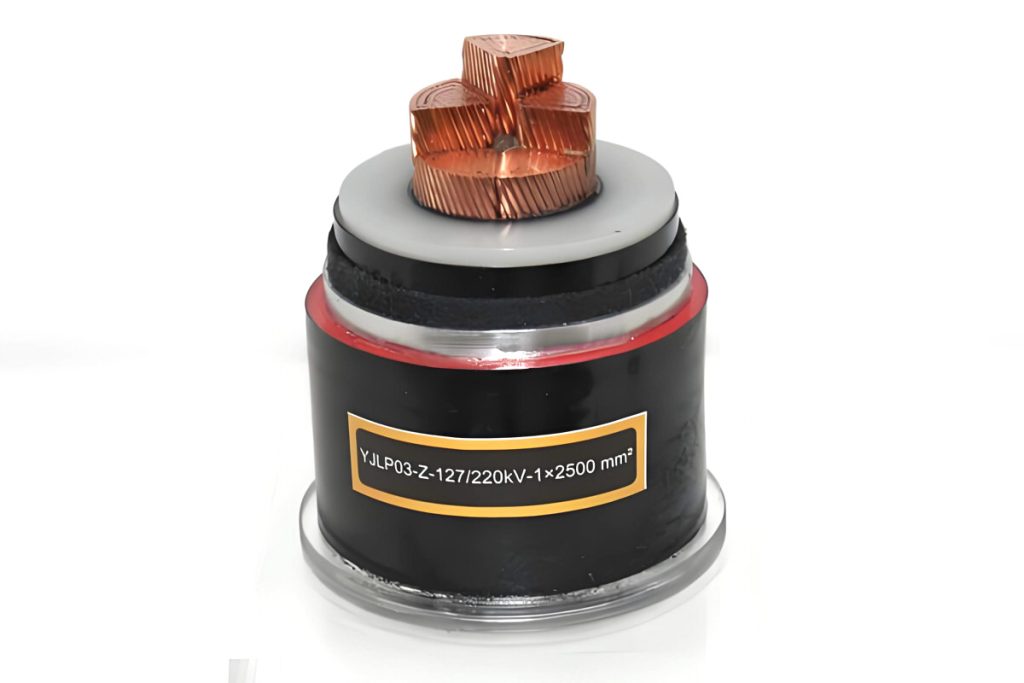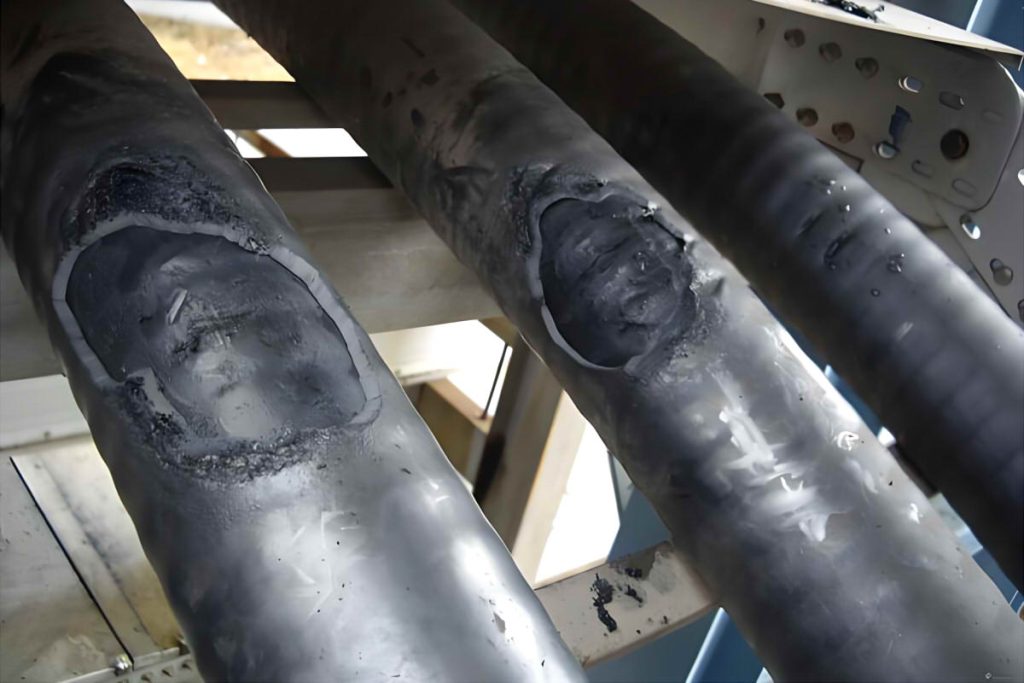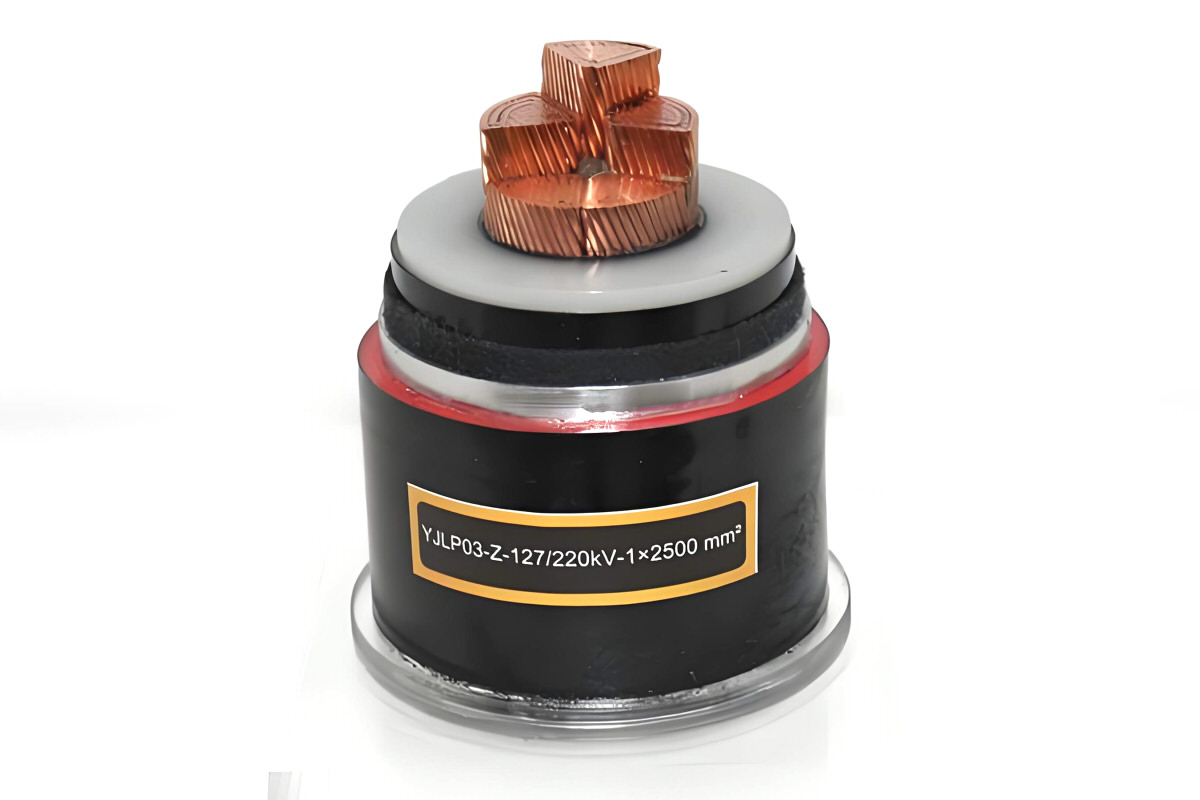High voltage cables are a type of cable used to transmit high voltages and large currents., normally used in the distribution and transmission of electrical energy, as well as in electrical substations. According to the standards of the International Electrotechnical Commission, High voltage cables are classified into three specifications: 110kV, 220kV y 500kV. Cables of 110kV and above are called ultra high voltage cables.
Table of Contents
- Different voltage levels in cables for high voltage
- Applications of high voltage cables in substations and power distribution
- Important parameters of high voltage cables
- What is the loss in high voltage cables??
- Can high voltage cables be used in low voltage distribution?
Different voltage levels in cables for high voltage
110kV high voltage cables
110kV high voltage cables typically use cross-linked polyethylene insulation materials., and the conductor is copper or aluminum, with cross sections varying from 50 a 2000 square millimeters. These cables are suitable for the distribution of electrical energy in cities and for small electrical substations..
220kV high voltage cables
Los cables de 220kV use copper or aluminum conductors, and insulation materials include cross-linked polyethylene, deposited cross-linked polyethylene and blocked polystyrene. The cross sections of these products vary between 50 Y 2000 square millimeters, and are used in large electrical substations and important power distribution and transmission systems..

500kV high voltage cables
500kV high voltage cables are ultra-high voltage cables used in transmission and distribution systems.. These cables have large cross sections in both the insulation and the conductor.. The protective layer of the cable can be aluminum alloy or steel tape. Thanks to its high voltage resistance characteristics, electromagnetic interference, low losses and low noise, They are suitable for large-scale power transmission and transformation projects..
Applications of high voltage cables in substations and power distribution
Substations
Electrical substations require a large amount of high voltage cables, including transmission cables, high voltage cables internal to the substation and high voltage cables in tunnels. Cable terminals are installed at the substation outputs to connect the substation to the transmission lines., allowing electricity to be brought to the entire city.
Power distribution and transmission
Many high voltage cables are used in power distribution and transmission., including overhead cables, tunnel cables and high voltage cables wound on transformers. The ability of high voltage cables to withstand high voltages and their greater stability can effectively reduce energy losses during transmission, making them widely used components in power distribution and transmission.
Important parameters of high voltage cables
Driver diameter
The conductor diameter of a high voltage cable is a crucial parameter, since it directly influences the electrical resistance and power losses of the cable. Usually, the larger the diameter of the conductor, the lower the resistance and, Thus, power losses. Usually, The diameter of the conductor in high voltage cables ranges between 50 mm y 200 mm.
Insulating layer thickness
The thickness of the insulating layer is one of the key parameters in high voltage cables.. Its main function is isolate the conductor under high tension, ensuring safe use of the cable. In general, the greater the thickness of the insulating layer, the greater the insulation capacity of the cable and its useful life. The typical thickness of the insulating layer in high voltage cables varies between 1 mm y 5 mm.

cable outer diameter
The outer diameter of the cable refers to the maximum size of the outer sheath of the cable. It is influenced by factors such as the application environment, electrical requirements and mechanical resistance. In general terms, the larger the outer diameter of the cable, the greater its mechanical resistance, making it suitable for heavy industrial sectors. Nevertheless, an outer diameter that is too large can make installation and wiring difficult, so it should be chosen based on the specific needs of the application environment.
Other size parameters
Other sizing parameters of high voltage cables include shielding layer thickness and sheath thickness. The shielding layer reduces the inductance and capacitance of the cable, while the cover protects it. The thickness of both layers should also be selected according to the specific conditions of the application environment..
In summary, Sizing parameters of high voltage cables are crucial factors affecting their performance. It is necessary to select the diameter of the conductor, the thickness of the insulating layer, the outer diameter of the cable and other parameters based on the electrical requirements and application environment conditions.
What is the loss in high voltage cables??
Types of losses in high voltage lines
Losses in high voltage transmission lines are mainly divided into two types:
- Resistance loss: It is the loss of energy caused by the resistance of the conductor to the flow of current.. This loss is inevitable and increases as the length of the conductor increases..
- Capacitance loss: It is the loss of energy produced by the capacitance between the transmission cables. The capacitance loss is proportional to the dielectric constant between the conductors and the transmission voltage.. Generally, Capacitance losses in high voltage lines are small and can be considered negligible..

Calculation of loss in high voltage lines
The calculation of losses in a high voltage transmission line is quite complex and requires considering several factors.. In practice, The following formula is used to calculate the loss rate in high voltage lines:
Loss rate = (Lost power / Transmitted power) × 100%
Where lost power refers to the energy that is lost during transmission, and the transmitted power is the total input power on the line.
The loss rate in high voltage lines is usually between 2% and the 7%, depending on the type of line, the material used and the transmission distance. Therefore, when designing a high voltage transmission line, it is necessary to take into account factors such as the load of the electrical system, transmission distance and voltage level to properly determine the type and parameters of the transmission line.
Although losses in high voltage lines are inevitable, it is possible to reduce them through efficient design. The use of large section conductors, high efficiency transformers and transmission equipment, as well as proper planning of transmission lines, can improve transmission efficiency and contribute to the sustainable development of the electrical system.
Can high voltage cables be used in low voltage distribution?
High voltage cables are not suitable for use in low voltage distribution systems, due to differences in characteristics between high and low voltage distribution.
- Characteristics of low voltage systems: In these systems, the current is higher and the voltage is lower. High voltage cables have a different impedance than low voltage cables., and the impedance of high voltage cables is higher. If used in low voltage distribution, This could lead to higher power losses..
- Voltage resistance: High voltage cables are designed to withstand high voltages, while low voltage systems operate at much lower voltages. Using high voltage cables at low voltage could lead to unnecessary over-insulation, which can damage cables or create safety risks.
- Cable thickness: High voltage cables usually have a larger outer diameter, which makes them less aesthetic and difficult to install, especially in small buildings. If placed incorrectly, can affect the appearance and use of buildings.
- High cost: High voltage cables are more expensive and their installation and maintenance require specialized personnel., which is not practical for low voltage systems.

Therefore, it is best to use low voltage cables suitable in low voltage distribution system. Nevertheless, in special circumstances where it is necessary to use high voltage cables in low voltage distribution, It is important to take into account the following:
- Control current and voltage: Make sure the current is not too high and the voltage does not exceed the rated voltage of the high-voltage cable. Generally, It is not recommended to use high voltage cables of more than 1kV in low voltage distribution., as this could overload the cables and cause safety accidents.
- Secure connections: Ensure cable connections are tight and reliable to avoid problems such as poor contacts or current leakage.
- Cable maintenance: Keep the cable surface clean to avoid contamination and moisture.
- Periodic reviews: Perform regular inspections and maintenance to ensure safe and reliable operation of cables.
In summary, high voltage cables are not suitable for low voltage distribution systems. To ensure the safety and stable operation of the low voltage system, It is recommended to use low voltage cables designed specifically for that purpose., along with adequate maintenance and efficient management thereof.

